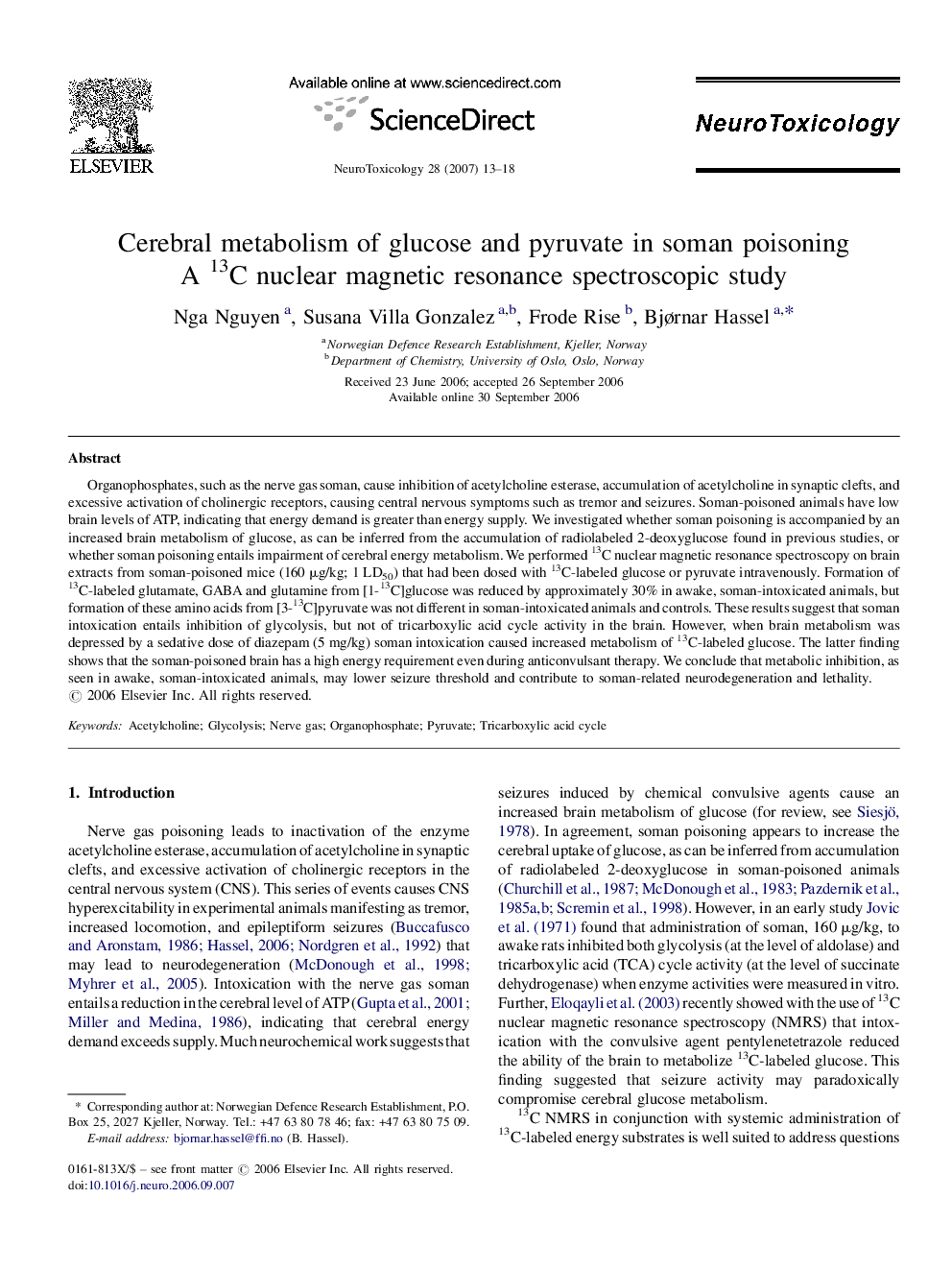| Article ID | Journal | Published Year | Pages | File Type |
|---|---|---|---|---|
| 2590488 | NeuroToxicology | 2007 | 6 Pages |
Organophosphates, such as the nerve gas soman, cause inhibition of acetylcholine esterase, accumulation of acetylcholine in synaptic clefts, and excessive activation of cholinergic receptors, causing central nervous symptoms such as tremor and seizures. Soman-poisoned animals have low brain levels of ATP, indicating that energy demand is greater than energy supply. We investigated whether soman poisoning is accompanied by an increased brain metabolism of glucose, as can be inferred from the accumulation of radiolabeled 2-deoxyglucose found in previous studies, or whether soman poisoning entails impairment of cerebral energy metabolism. We performed 13C nuclear magnetic resonance spectroscopy on brain extracts from soman-poisoned mice (160 μg/kg; 1 LD50) that had been dosed with 13C-labeled glucose or pyruvate intravenously. Formation of 13C-labeled glutamate, GABA and glutamine from [1-13C]glucose was reduced by approximately 30% in awake, soman-intoxicated animals, but formation of these amino acids from [3-13C]pyruvate was not different in soman-intoxicated animals and controls. These results suggest that soman intoxication entails inhibition of glycolysis, but not of tricarboxylic acid cycle activity in the brain. However, when brain metabolism was depressed by a sedative dose of diazepam (5 mg/kg) soman intoxication caused increased metabolism of 13C-labeled glucose. The latter finding shows that the soman-poisoned brain has a high energy requirement even during anticonvulsant therapy. We conclude that metabolic inhibition, as seen in awake, soman-intoxicated animals, may lower seizure threshold and contribute to soman-related neurodegeneration and lethality.
